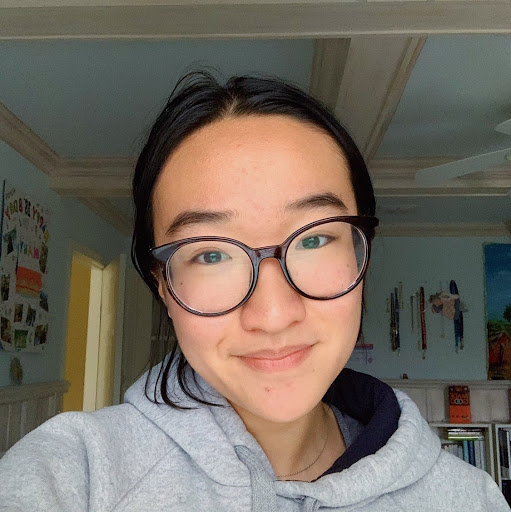Mary M Chen
age ~50
from Fremont, CA
- Also known as:
-
- Mary Te Chen
- Mary C Hen
- Phone and address:
- 3315 Willet Pl, Fremont, CA 94555
Mary Chen Phones & Addresses
- 3315 Willet Pl, Fremont, CA 94555
- 30 Millbridge Ct, Nottingham, MD 21236
- Baltimore, MD
- 364 Haas Ave, San Leandro, CA 94577
- Davis, CA
Real Estate Brokers

Mary Chen, Saratoga CA Agent
view sourceWork:
Bay Metro Realty
Saratoga, CA
4083877500 (Phone)
License #01238354
Saratoga, CA
4083877500 (Phone)
License #01238354
Wikipedia References

Mary Chen
Resumes

Mary Chen Tustin, CA
view sourceWork:
Alta Bates Summit Medical Center
Feb 2012 to May 2012
Volunteer Oakland Asian Students Education Services
Oakland, CA
Jan 2012 to May 2012
Tutor Kumon Math Center
Santa Ana, CA
Jun 2002 to Aug 2002
Math Tutor
Feb 2012 to May 2012
Volunteer Oakland Asian Students Education Services
Oakland, CA
Jan 2012 to May 2012
Tutor Kumon Math Center
Santa Ana, CA
Jun 2002 to Aug 2002
Math Tutor
Education:
University of California
Berkeley, CA
2008 to 2012
Bachelor of Science in Molecular Toxicology Tustin High School
Tustin, CA
2004 to 2008
High School diploma
Berkeley, CA
2008 to 2012
Bachelor of Science in Molecular Toxicology Tustin High School
Tustin, CA
2004 to 2008
High School diploma
Skills:
Dexterous with computers and technology; fluent in spoken Cantonese; some in vitro laboratory experience; friendly and honest personality; fast and diligent learner; works well with everyone; team player; organized
Us Patents
-
Stable Coil Designs
view source -
US Patent:6860893, Mar 1, 2005
-
Filed:Oct 9, 2001
-
Appl. No.:09/974068
-
Inventors:Michael P. Wallace - Pleasanton CA, US
Marc-Alan Levine - San Francisco CA, US
Delilah Yin Hui - Union City CA, US
Mary M. Chen - San Leandro CA, US
Liem Ho - Mountain View CA, US -
Assignee:Boston Scientific SciMed, Inc. - Maple Grove MN
-
International Classification:A61M029/00
-
US Classification:606200
-
Abstract:This is an implantable vaso-occlusive device. The device has a complex, three-dimensional structure in a relaxed configuration that may be used in the approximate shape of an anatomical cavity. It may be deployed in the approximate shape of a sphere, an ovoid, a clover, a box-like structure or other distorted spherical shape. The loops forming the relaxed configuration may pass through the interior of the structure. The device is a self-forming shape made from a pre-formed linear vaso-occlusion member. Fibers may be introduced onto the device and affixed to the pre-formed linear member. The constituent member may be also be covered with a fibrous braid. The device is typically introduced through a catheter. The device is passed axially through the catheter sheath and assumes its form upon exiting the catheter without further action. The invention also includes methods of winding the anatomically shaped vaso-occlusive device into appropriately shaped forms and annealing them to form various devices.
-
Apelin And Uses Thereof
view source -
US Patent:7947280, May 24, 2011
-
Filed:Nov 14, 2007
-
Appl. No.:11/985460
-
Inventors:Euan A. Ashley - Palo Alto CA, US
Mary M. Chen - Fremont CA, US
Thomas Quertermous - Stanford CA, US -
Assignee:The Board of Trustees of the Leland Stanford Junior University - Palo Alto CA
-
International Classification:A61K 39/00
C07K 4/00
C07K 4/12 -
US Classification:4241851, 530327
-
Abstract:The invention provides a method of treating or preventing heart failure or a disease or condition associated with heart failure comprising administering an effective dose of an apelin peptide or APJ receptor ligand to the subject. According to certain embodiments of the invention the apelin peptide is administered chronically. In certain embodiments of the invention the apelin peptide is administered in an amount effective to improve at least one hemodynamic parameter or prognostic variable for heart failure. Clinical conditions associated with heart failure include, but are not limited to, atherosclerosis, restenosis, ischemic cardiovascular diseases, idiopathic or viral cardiomyopathy, and the like.
-
Polypeptide Production In Animal Cell Culture
view source -
US Patent:20040048368, Mar 11, 2004
-
Filed:Aug 8, 2003
-
Appl. No.:10/637918
-
Inventors:Mary Chen - Burlingame CA, US
Lawrence Forman - Sunnyvale CA, US -
Assignee:Genentech, Inc. - South San Francisco CA
-
International Classification:C12N005/02
-
US Classification:435/325000, 435/383000
-
Abstract:A method-of producing a polypeptide in fed batch cell culture is provided which involves an initial cell growth phase and a distinct production phase. In the initial growth stage, animal cells having nucleic acid encoding the polypeptide are cultured at a starting osmolality of about 280-330 mOsm in the presence of a concentration of glucose controlled throughout the culturing to be within a range between about 0.01 and 1 g/L. This is followed by a production phase, where the cultured animal cells of the growth phase are inoculated at a cell seed density of at least 1.0×10cells/mL and the cells are cultured at a starting osmolarity of about 400-600 mOsm in the presence of a concentration of glucose controlled throughout the culturing to be within a range between about 0.01 and 1 g/L. Preferably, the glutamine concentration in the cell culture medium is simultaneously controlled in order to curtail production of lactic acid and ammonia which result from unnecessarily high glutamine concentrations. During the growth phase, production of potentially detrimental metabolic waste products, such as lactic acid, is controlled thereby curtailing the increase of osmolality due to accumulation and neutralization of waste products. Thus, the cell growth can be improved. In the production phase, the cell culture conditions are modified in order to arrest or reduce cell growth and thereby direct nutrient utilization toward production, as opposed to cell growth. Overall, it is intended that the method results in an improvement in specific productivity, reduction in production run times and/or an increase in final product concentration.
-
Diagnostic Markers And Pharmacological Targets In Heart Failure And Related Reagents And Methods Of Use Thereof
view source -
US Patent:20050152836, Jul 14, 2005
-
Filed:May 21, 2004
-
Appl. No.:10/850941
-
Inventors:Euan Ashley - Palo Alto CA, US
Mary Chen - Fremont CA, US
Thomas Quertermous - Stanford CA, US
David Xing-Fei Deng - Mountain View CA, US
Anya Tsalenko - Chicago IL, US
Amir Ben-dor - Bellevue WA, US
Laurakay Bruhn - Mountain View CA, US
Zohar Yakhini - Ramat HaSharon, IL -
International Classification:A61K051/00
C12Q001/68
G01N033/53
G01N033/567
C07K016/46 -
US Classification:424001490, 435006000, 435007200, 530391100
-
Abstract:The invention identifies genes whose expression is upregulated or downregulated following mechanical offloading in subjects with heart failure. The invention provides compositions comprising a targeting agent conjugated to a functional moiety, wherein the targeting agent selectively binds to a polypeptide encoded by one of these genes. The functional moiety can be an imaging agent, therapeutic agent, etc. The invention further provides methods for providing diagnostic or prognostic information related to heart failure involving detecting expression or activity of an expression product of one or more of the identified genes. The invention further provides diagnostic and therapeutic methods comprising detecting or administering an apelin peptide to a subject.
-
Polypeptide Production In Animal Cell Culture
view source -
US Patent:20050272124, Dec 8, 2005
-
Filed:Jun 29, 2005
-
Appl. No.:11/172090
-
Inventors:Mary Chen - Burlingame CA, US
Lawrence Forman - Sunnyvale CA, US -
Assignee:Genentech, Inc. - South San Francisco CA
-
International Classification:C12P021/06
C12N005/06 -
US Classification:435069100, 435358000, 435320100
-
Abstract:A method of producing a polypeptide in fed batch cell culture is provided which involves an initial cell growth phase and a distinct production phase. In the initial growth stage, animal cells having nucleic acid encoding the polypeptide are cultured at a starting osmolality of about 280-330 mOsm in the presence of a concentration of glucose controlled throughout the culturing to be within a range between about 0.01 and 1 g/L. This is followed by a production phase, where the cultured animal cells of the growth phase are inoculated at a cell seed density of at least 1.0×10cells/mL and the cells are cultured at a starting osmolarity of about 400-600 mOsm in the presence of a concentration of glucose controlled throughout the culturing to be within a range between about 0.01 and 1 g/L. Preferably, the glutamine concentration in the cell culture medium is simultaneously controlled in order to curtail production of lactic acid and ammonia which result from unnecessarily high glutamine concentrations. During the growth phase, production of potentially detrimental metabolic waste products, such as lactic acid, is controlled thereby curtailing the increase of osmolality due to accumulation and neutralization of waste products. Thus, the cell growth can be improved. In the production phase, the cell culture conditions are modified in order to arrest or reduce cell growth and thereby direct nutrient utilization toward production, as opposed to cell growth. Overall, it is intended that the method results in an improvement in specific productivity, reduction in production run times and/or an increase in final product concentration.
-
Polypeptide Production In Animal Cell Culture
view source -
US Patent:61804010, Jan 30, 2001
-
Filed:May 4, 1998
-
Appl. No.:9/073198
-
Inventors:Mary Chen - Burlingame CA
Lawrence W. Forman - Sunnyvale CA -
Assignee:Genentech, Inc. - South San Francisco CA
-
International Classification:C12N 500
C12N 506 -
US Classification:435358
-
Abstract:A method of producing a polypeptide in fed batch cell culture is provided which involves an initial cell growth phase and a distinct production phase. In the initial growth stage, animal cells having nucleic acid encoding the polypeptide are cultured at a starting osmolality of about 280-330 mOsm in the presence of a concentration of glucose controlled throughout the culturing to be within a range between about 0. 01 and 1 g/L. This is followed by a production phase, where the cultured animal cells of the growth phase are inoculated at a cell seed density of at least 1. times. 10. sup. 6 cells/mL and the cells are cultured at a starting osmolarity of about 400-600 mOsm in the presence of a concentration of glucose controlled throughout the culturing to be within a range between about 0. 01 and 1 g/L. Preferably, the glutamine concentration in the cell culture medium is simultaneously controlled in order to curtail production of lactic acid and ammonia which result from unnecessarily high glutamine concentrations.
-
Polypeptide Production In Animal Cell Culture
view source -
US Patent:58561790, Jan 5, 1999
-
Filed:Mar 10, 1994
-
Appl. No.:8/208888
-
Inventors:Mary Chen - Burlingame CA
Lawrence W. Forman - Sunnyvale CA -
Assignee:Genentech, Inc. - South San Francisco CA
-
International Classification:C12N 500
C12P 2106
C12P 2102
C12P 2104 -
US Classification:435325
-
Abstract:A method of producing a polypeptide in fed batch cell culture is provided which involves an initial cell growth phase and a distinct production phase. In the initial growth stage, animal cells having nucleic acid encoding the polypeptide are cultured at a starting osmolality of about 280-330 mOsm in the presence of a concentration of glucose controlled throughout the culturing to be within a range between about 0. 01 and 1 g/L. This is followed by a production phase, where the cultured animal cells of the growth phase are inoculated at a cell seed density of at least 1. times. 10. sup. 6 cells/mL and the cells are cultured at a starting osmolarity of about 400-600 mOsm in the presence of a concentration of glucose controlled throughout the culturing to be within a range between about 0. 01 and 1 g/L. Preferably, the glutamine concentration in the cell culture medium is simultaneously controlled in order to curtail production of lactic acid and ammonia which result from unnecessarily high glutamine concentrations.
-
Stable Coil Designs
view source -
US Patent:6322576, Nov 27, 2001
-
Filed:Feb 4, 1998
-
Appl. No.:9/018278
-
Inventors:Michael P. Wallace - Pleasanton CA
Marc-Alan Levine - San Francisco CA
Delilah Yin Hui - Union City CA
Mary M. Chen - San Leandro CA
Liem Ho - Mountain View CA -
Assignee:Target Therapeutics, Inc. - Fremont CA
-
International Classification:A61B 1700
-
US Classification:606191
-
Abstract:This is an implantable vaso-occlusive device. The device has a complex, three-dimensional structure in a relaxed configuration that may be used in the approximate shape of an anatomical cavity. It may be deployed in the approximate shape of a sphere, an ovoid, a clover, a box-like structure or other distorted spherical shape. The loops forming the relaxed configuration may pass through the interior of the structure. The device is a self-forming shape made from a pre-formed linear vaso-occlusion member. Fibers may be introduced onto the device and affixed to the pre-formed linear member. The constituent member may be also be covered with a fibrous braid. The device is typically introduced through a catheter. The device is passed axially through the catheter sheath and assumes its form upon exiting the catheter without further action. The invention also includes methods of winding the anatomically shaped vaso-occlusive device into appropriately shaped forms and annealing them to form various devices.
Name / Title
Company / Classification
Phones & Addresses
Owner
Maxxini
Women's Clothing Stores
Women's Clothing Stores
1650 Union St, San Francisco, CA 94123
Website: maxamillian.com,
Website: maxamillian.com,
Principal
Tapioca Express
Ret Misc Foods
Ret Misc Foods
1964 Driscoll Rd, Fremont, CA 94539
5109790788
5109790788
MASTER CHEN'S ACUPUNCTURE INSTITUTE LLC
President, Owner
MAXXINI, INC
Whol Women's Clothing · Women's Apparel-Retail
Whol Women's Clothing · Women's Apparel-Retail
1650 Un St, San Francisco, CA 94123
4159226668, 4159220127
4159226668, 4159220127
President
ADVENTCO ENTERPRISE, INC
35075 Peco St, Union City, CA 94587
President
MAXAMILLIAN, INC
1836 10 Ave, San Francisco, CA 94122
Principal, President
BAY METRO REALTY, INC
Real Estate Agent/Manager
Real Estate Agent/Manager
1415 Rollins Rd #128, Burlingame, CA 94010
Medicine Doctors

Dr. Mary Chen, Fremont CA - MD (Doctor of Medicine)
view sourceSpecialties:
Internal Medicine
Address:
2500 Mowry Ave Suite 212, Fremont, CA 94538
5106086174 (Phone), 5107456435 (Fax)
795 El Camino Real, Palo Alto, CA 94301
6503214121 (Phone), 6503257912 (Fax)
PALO ALTO MEDICAL FOUNDATION
795 El Camino Real, Palo Alto, CA 94301
6503214121 (Phone), 5102081776 (Fax)
5106086174 (Phone), 5107456435 (Fax)
795 El Camino Real, Palo Alto, CA 94301
6503214121 (Phone), 6503257912 (Fax)
PALO ALTO MEDICAL FOUNDATION
795 El Camino Real, Palo Alto, CA 94301
6503214121 (Phone), 5102081776 (Fax)
Certifications:
Internal Medicine, 2002
Awards:
Healthgrades Honor Roll
Languages:
English
Education:
Medical School
Med Coll Of Pa
Graduated: 1979
Med Coll Of Pa
Graduated: 1979

Mary L. Chen
view sourceSpecialties:
Internal Medicine, Family Medicine
Work:
Mary L Chen MD Incorpated
18780 Amar Rd STE 107, Walnut, CA 91789
6268106777 (phone), 6268106687 (fax)
18780 Amar Rd STE 107, Walnut, CA 91789
6268106777 (phone), 6268106687 (fax)
Education:
Medical School
Shanghai Med Univ, Shanghai First Med Univ, Shanghai, China
Graduated: 1985
Shanghai Med Univ, Shanghai First Med Univ, Shanghai, China
Graduated: 1985
Procedures:
Nutrition Therapy
Conditions:
Abnormal Vaginal Bleeding
Atopic Dermatitis
Diabetes Mellitus (DM)
Hypertension (HTN)
Overweight and Obesity
Atopic Dermatitis
Diabetes Mellitus (DM)
Hypertension (HTN)
Overweight and Obesity
Languages:
English
Description:
Dr. Chen graduated from the Shanghai Med Univ, Shanghai First Med Univ, Shanghai, China in 1985. She works in Walnut, CA and specializes in Internal Medicine and Family Medicine. Dr. Chen is affiliated with Glendora Community Hospital.

Mary Chen
view sourceSpecialties:
Optometry
Work:
Raymond Fong MD
859 60 St STE 1, Brooklyn, NY 11220
7184368850 (phone), 7184368857 (fax)
859 60 St STE 1, Brooklyn, NY 11220
7184368850 (phone), 7184368857 (fax)
Languages:
Chinese
English
Korean
Spanish
English
Korean
Spanish
Description:
Dr. Chen works in Brooklyn, NY and specializes in Optometry. Dr. Chen is affiliated with Lutheran Medical Center.

Mary Ruth Wintermantel Chen
view sourceSpecialties:
Internal Medicine
Endocrinology, Diabetes & Metabolism
Urology
Sports Medicine
Endocrinology, Diabetes & Metabolism
Urology
Sports Medicine
Education:
University of Iowa (1997)

Mary Wei-May Chen
view sourceSpecialties:
General Practice
Internal Medicine
Internal Medicine
Education:
Drexel University(1979)

Mary Chen Estrada
view source
Mary Chen
view source
Mary Chen
view source
Mary Chen
view source
Mary Chen
view source
Mary Chen
view source
Mary Chen
view source
Mary Chen
view sourceGoogleplus

Mary Chen
Lived:
San Jose, CA
Work:
Marvell Semiconductor Inc. - Financial Planning Manager
Education:
University of California, Berkeley

Mary Chen
Work:
Bloomberg L.P. - Analyst (2011)
Education:
Pace University - Finance and International Management

Mary Chen
Education:
The Art of Stalking

Mary Chen

Mary Chen
Education:
Rutgers University

Mary Chen
Relationship:
Its_complicated
About:
把握現在 年輕不要留白
Bragging Rights:
交很多朋友

Mary Chen
About:
I review historical romances on Goodreads and Amazon:http://www.goodreads.co...
Tagline:
Book Reviewer

Mary Chen
Youtube
Plaxo

Chen Mary
view sourceECHEN Consulting

Mary Chen
view sourcePalladium Energy

Mary Chen Stiles
view sourceMiami, FL
News

Clinton Gets Immigration Group's Endorsement Before NY Primary
view source- Immigrant Action's board president Mary Chen elaborated on the track record praised by Choi. Chen said while a senator, Hillary provided "effective" constituent services for immigrants and was responsive to the immigrant communities' needs and concerns.
- Date: Apr 13, 2016
- Category: U.S.
- Source: Google
Get Report for Mary M Chen from Fremont, CA, age ~50





